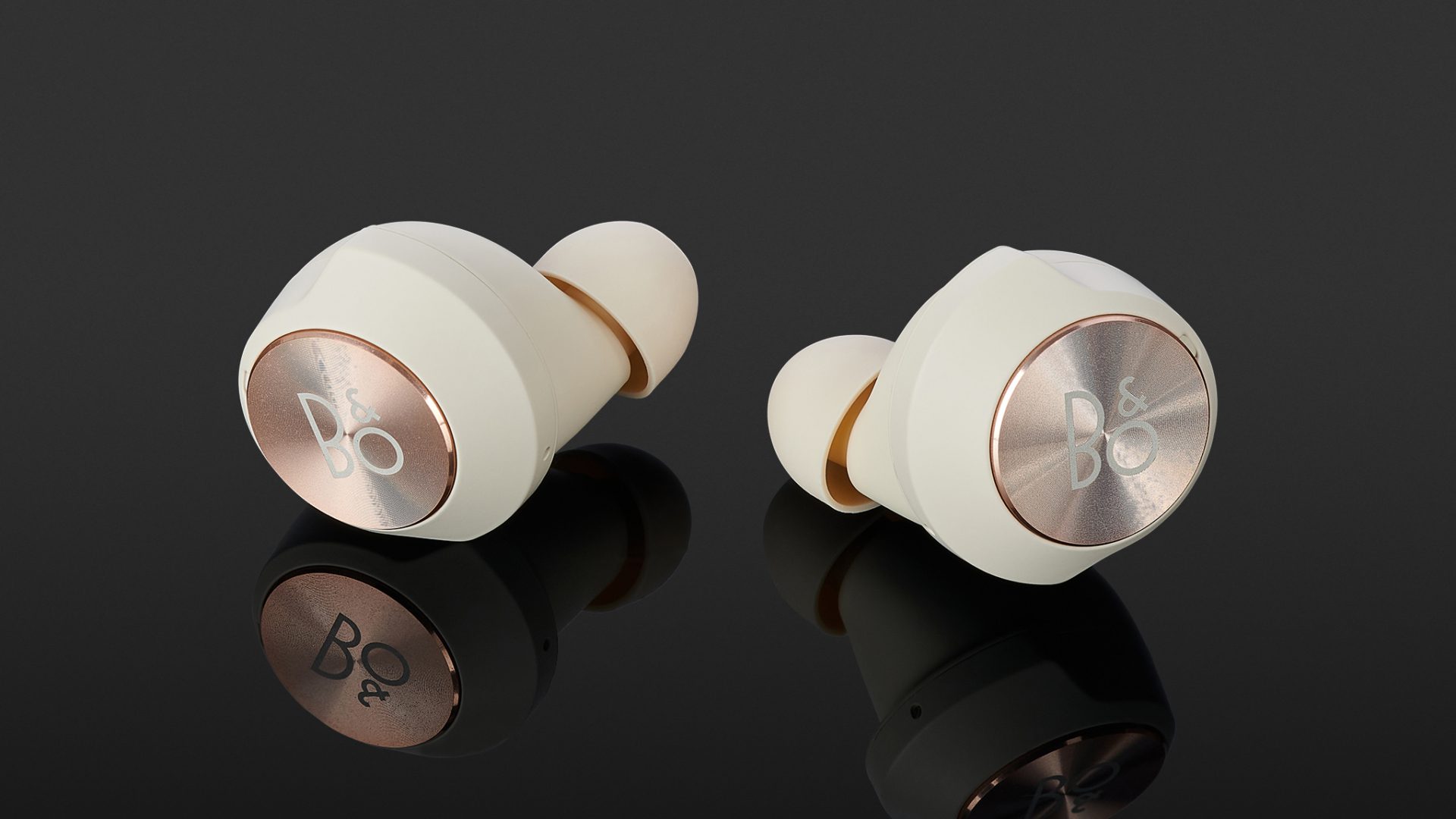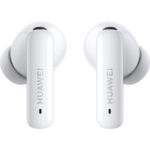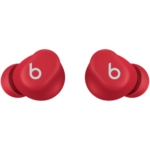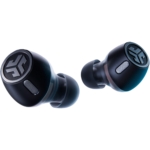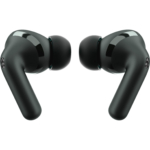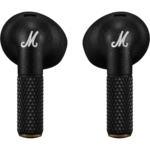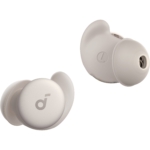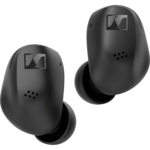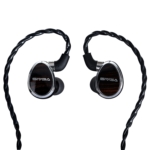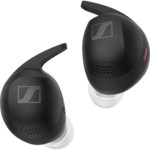The musicality of these True-Wireless headphones, with their modern, powerful bass response, is highly commendable. Both of the Bang & Olufsen Beoplay EQ’s ANC variants offer satisfactory attenuation of external noise, but the passive isolation properties of these solid, weatherproof in-ears are outstanding. The personalisation options and the range of functions offered by the touch control appear to be in need of improvement. These are points of criticism that could be remedied by updating the firmware and the app. However, the system’s comparatively low total runtime is something that must be taken into account.
The long-established Danish manufacturer of high-quality consumer electronics B&O tout the latest addition to their True Wireless portfolio as offering precise, powerful playback and effective suppression of outside noise, with the Beoplay EQ claiming to combine high passive isolation with hybrid Adaptive Noise Cancelling.
With a weight of eight grams per side, the rather massive housings of these headphones do not place them among the lightweights, nor do they appear particularly discreet when worn, as these in-ears do not sit flush with the ear but protrude considerably, and this limits the options for wearing them with hats in the winter. However, they fit well, embedding excellently into the ears so that they do not create a feeling of pressure even during listening sessions lasting several hours and are comfortable. Indeed, the Beoplay EQ is supplied with a choice of five different ear-tips so that the fit can be adjusted to individual requirements. The transport case, which serves as a charging station, is characterised by a slim, compact design, weighs only 50 grams and is made of anodised aluminium, which gives an impression of extremely high-quality both visually and haptically. The touch-sensitive surfaces of these earpieces are also made of aluminium; otherwise, they are made of plastic and are dust- and water-resistant in accordance with IP54 certification, which protects the system from weather-related moisture outdoors.
Battery life
When the noise-cancelling function is active, the Beoplay EQ achieve a runtime of a good six hours at higher volume levels, which increases to just under seven hours in basic mode, giving these headphones solid endurance values. However, the battery reserve offered by the charging case does not seem particularly high compared to the competition, as these in-ears can only be fully charged once and then charged again to 80 per cent before an external power supply is needed. Without noise cancelling, the total runtime of the system is therefore about 19 hours, while in ANC mode, 17 hours are available. A charging cycle of the earphones is completed after 70 minutes. For more spontaneous use, the quick-charge function can be used, and this provides capacity for about two hours of listening time after a charging time of 20 minutes. The case can also be powered both wirelessly via Qi and wired via a USB-C connection, and the charging process via the supplied USB-C to USB-A cable takes 110 minutes.
Operation
When getting started, pairing these wireless headphones, which support Bluetooth standard 5.2 and single-sided use in single mode, can be done by removing them from the case, as the Beoplay EQ automatically switch on and are put into pairing mode. However, this does not work when another device comes into play. If a wireless connection to a tablet is to be established as an alternative to your smartphone, the procedure becomes somewhat awkward, as the pairing mode can only be activated via the app or via the earpieces when in the charger by holding the touch surfaces for several seconds. Another drawback is that the earpieces cannot be switched on and off manually; putting them back into the case means that they have to be constantly on charge which has a negative effect on the battery life. As a workaround, a timer that can be activated via the app can be used, and this switches the earpieces off after 15 minutes of inactivity. However, when using this workaround, it would be useful if you could select the time interval of the switch-off.
Once a wireless connection is established, a double tap on the right earpiece controls playback, and this is also used to answer and end phone calls. On the left side, you can switch between noise cancellation, ambient mode and basic sound. Volume control is also available, and this can be increased on the right and decreased on the left by tapping and then holding. It is not possible to skip back and forth through the track selection or to call up a voice assistant; these functions would be a welcome addition by means of a firmware update. The stability and above-average range of the Bluetooth connection proved to be advantageous, as it was twelve metres within an urban environment and remained free of dropouts even through several rooms. The three omnidirectional MEMS microphones on each side of the headphones also provided good speech intelligibility during calls. In a busy setting, however, you have to accept limitations, as the noise-cancelling microphone technology does not work silently and makes itself noticeable to the caller on the end of the line as a purr-like hiss.
App connection
In addition to the automatic switch-off, the activation of pairing mode and the ability to make firmware updates, the B&O app also offers options for adjusting the sound of the earphones. Six pre-configured pre-sets such as “Podcast”, “Sport”, or “Commute” are available for this purpose, while custom settings can be made with the help of the Beosonic function. These can be saved, although this overwrites the pre-sets provided, which is not a very good arrangement. This becomes particularly apparent since the Beoplay EQ’s personalisation options via the app seem to be capable of being expanded; for example, an adjustment of the touch control is something you’d expect in the lower and middle price segment. It’s also possible to miss whether the ANC, transparency or basic mode is active. In the current app version, it is only possible to switch adaptive noise cancelling on and off.
Noise cancellation and ambient mode
In order to effectively attenuate both voices and the lower frequency range, these True Wireless earphones are equipped with hybrid noise cancelling, and according to Bang & Olufsen, this is done by combining the feed-forward with the feedback method. High frequencies are also supposed to be shielded by the fit of the earphones, which has been optimised for passive noise cancellation. In addition, the Beoplay EQ analyse the environment to determine the appropriate algorithm and automatically adjust noise cancellation to the environment when adaptive noise cancelling has been activated in the app. However, all this is only in theory.
In practice, it was the case that these fairly robust earpieces seal the ears very well and the passive isolation properties are indeed exceptionally high so that during our test I was puzzled more than once when I realised that I had overheard both the doorbell and the telephone lying right next to me while listening to music. From a medium volume level upwards, the shielding provided by these in-ears is already immense without noise cancellation, and this can be a problem if used during outdoor activities, so I would recommend the ambient mode for outdoors. This makes it possible to perceive the environment and be able to react to other people by cleanly amplifying outside noises and voices in the immediate vicinity so that they are still understandable up to a volume of about 50 per cent. In addition, a conversation can be held without any problems during paused playback without having to take out the earphones. However the adaptive noise cancelling didn’t totally convince me, but I found the static noise cancellation more effective in most cases. The adaptive ANC mode tends to attenuate the mid-frequency spectrum in particular, while the fixed ANC mode has advantages in the low-frequency range, especially since the reduction appears to be wider-ranging.
Sound
The down-to-earth basic sound surprised me with a powerful, dynamic low-frequency presentation that reaches deep down and seems neither particularly slim nor tight, instead it has a fullness that offers an enjoyable listening experience. Despite the substance in the low bass, the bass reproduction sounds precise and doesn’t tend towards sluggishness. On the contrary, electronic tracks like Trentemøller’s remix “Moan Feat. Ane Trolle” were reproduced with an impulsive, infectious timing that resulted in involuntary foot-tapping. I’ve rarely heard this club classic reproduced in such a multi-layered and detailed way via Bluetooth headphones, as the upper midrange and lower treble reproduction has a high degree of subtlety and reveals a lot of information that is attractively fanned out and well separated. Furthermore, the lively midrange is characterised by a well-proportioned basic warmth, which is appealing without losing naturalness. This also benefits voice reproduction, providing impeccable speech intelligibility, making the Beoplay EQ ideal for spoken content and films.
I noticed that the high-frequency range needs a degree of volume to develop, which means that the sound widens and gains clarity and facets with increased playback level. Beat-oriented music can sound downright muffled and muddy at low output levels as treble components are missing, while at room volume, there is a suitable presence. However, if you prefer quieter listening, the upper-frequency range can be boosted using the Beosonic function for a balanced, detailed and wide-ranging sound. On the other hand, at high volume levels, the upper registers might occasionally be perceived as a bit peaky, although the treble range seems agile while not being too demanding or obtrusive. The treble imaging has light-footed playfulness rather than a presentation bursting with energy. In terms of high-resolution audio codecs, these headphones support aptX Adaptive, the backwards-compatible flagship of the aptX family, as well as the AAC format, while LDAC has been omitted.
Technical specifications
- Ear couplingIn-ear
- Typeclosed
- Transducer principledynamic
- Frequency response (headphones)20 - 20.000 Hz
- Impedance@1kHz: 17 ohms ±2.55 ohms
- Sound pressure level (SPL)@1kHz (-3 dBFS): 107 dB ±3 dB
- Weight without cable8 g each, Case 50 g
- Cable length50 cm
What's in the box
- 4 pairs of silicone eartips (XS/S/M/L)
- 1 pair of Comply foam eartips (M)
- USB-C to USB-A charging cable
- Charging case
Special features
- available in anthracite and sand
- BT codecs: SBC, AAC, aptX Adaptive
- BT-Version: 5.2
- BT-Profile: A2DPv1.3.1, AVRCPv1.6.1, HFPv1.7.1, HSPv1.2, BLE GATT












